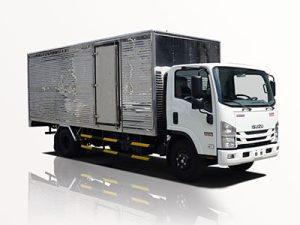Monday to Saturday - 8:00 -17:30
Semi Fuel Tank Capacity: A Comprehensive Guide
Understanding the semi fuel tank capacity is crucial for transportation companies, truck drivers, and fleet managers alike. This guide will delve into everything you need to know about semi fuel tank capacity – from what it is, why it’s important, how to choose the right tank capacity for your needs, and practical examples to help you make informed decisions.
What is Semi Fuel Tank Capacity?
Semi fuel tank capacity refers to the amount of fuel that a semi-truck’s fuel tank can hold. This capacity is typically measured in gallons or liters and can vary significantly based on the truck model, design, and intended use.
Importance of Semi Fuel Tank Capacity
The fuel capacity of a semi-truck has several implications for both operational efficiency and cost management. Here are some key reasons why understanding this aspect is essential:
1. Operating Range
The most direct impact of fuel tank capacity is on the vehicle’s operating range. More fuel allows for longer distances between refueling stops, which is particularly crucial for long-haul trucking.
2. Cost Efficiency
Understanding fuel capacity can help optimize fuel consumption and reduce overall costs. Larger tanks can sometimes lead to better economic outcomes by minimizing fuel stops.
3. Weight Considerations
Fuel adds weight to the vehicle. Operators need to balance fuel capacity with permissible weight limits to ensure compliance with transportation regulations.
4. Route Planning
By knowing the fuel capacity, drivers can plan routes more effectively, especially in regions where fuel stations are scarce.
Types of Semi Fuel Tanks
Semi-trucks are equipped with various types of fuel tanks, each designed to meet specific needs. Understanding these types can help you make informed decisions for your fleet.
1. Standard Fuel Tanks
These are the most common fuel tanks found on semi-trucks and typically range from 100 to 300 gallons. Their standard sizes are well-suited for most trucking needs.
2. Auxiliary Fuel Tanks
Auxiliary tanks are additional tanks that can be mounted alongside or behind the main tank. These are used to increase the total fuel capacity, helping to extend driving range significantly.
3. Sleeper Cab Fuel Tanks
Some tractors are designed with integrated tanks in the sleeper cab, optimizing space and enhancing the truck’s aesthetic appeal, while also providing additional fuel capacity.
4. Custom Fuel Tanks
Custom tanks can be built to meet specific requirements of a transportation business or to comply with local regulations, allowing for a tailored solution.
Factors Affecting Semi Fuel Tank Capacity
Several factors can influence the fuel tank capacity of a semi-truck, including:
1. Manufacturer Specifications
Different manufacturers have varying designs and specifications, which can significantly affect fuel capacity.
2. Truck Configuration
The specific configuration of a truck, including its axle arrangement and frame design, plays a role in determining the maximum tank size permissible.
3. Regulations
Regional regulations often dictate maximum dimensions and capacities for fuel tanks, particularly when considering weight limits on highways.
4. Intended Use of the Truck
The truck’s use—whether long-haul, short-haul, or specialty transport—can lead to different fuel capacity requirements.
Choosing the Right Semi Fuel Tank Capacity
Selecting the appropriate fuel tank size for your semi-truck is critical for both operational efficiency and compliance. Here are some considerations to keep in mind:
1. Assess Your Needs
Start by evaluating your typical routes. Long-haul trips may benefit from larger tanks, while local deliveries might not require as much capacity.
2. Understand Regional Fuel Availability
Consider the availability of fuel stations along your routes. If you often travel through rural areas, larger tanks can help avoid delays due to refueling.
3. Factor in Weight Limits
Ensure your total vehicle weight remains within legal limits, considering both the fuel’s weight and cargo when selecting tank size.
4. Review Manufacturer Options
Consult with your semi-truck manufacturer for recommendations based on your specific truck model and its allowed configurations.
Practical Examples
To better illustrate the implications of semi fuel tank capacity, let’s look at a few practical examples:
Example 1: Long-Haul Trucking
A long-haul trucking company operates a fleet of 18-wheelers with standard fuel tanks of 300 gallons. Their typical routes are over 1,000 miles, and they choose this capacity to minimize refueling stops, leading to greater operational efficiency.
Example 2: Local Deliveries
A delivery service operating in urban areas finds that a fuel tank capacity of 150 gallons is ample, allowing enough fuel for multiple trips while keeping weight down for mobility and maneuverability.
Example 3: Specialty Transport
A logistics company transporting hazardous materials requires custom fuel tanks with added capacity to comply with distance restrictions and ensure safe operations within regulatory frameworks.
Maintenance of Fuel Tanks
Proper maintenance of your semi fuel tank is vital for longevity and efficiency. Here are some tips to ensure your tank remains in top shape:
1. Regular Inspections
Conduct routine checks for leaks, rust, and damage. Early detection can save costs on repairs or replacements.
2. Cleaning and Flushing
Periodic cleaning of the tank is necessary to prevent sludge buildup and contamination that can affect engine performance.
3. Fuel Quality Checks
Monitor fuel quality and use additives if necessary, particularly if your fuel has been stored for extended periods or has been sourced from multiple vendors.
4. Track Fuel Use
Keep records of fuel consumption to identify any unusual patterns that may indicate problems with the tank or the engine.
Frequently Asked Questions (FAQs)
1. What is the average fuel tank capacity for a semi-truck?
The average fuel tank capacity for semi-trucks typically ranges between 100 and 300 gallons, depending on the truck’s purpose and configuration.
2. How does fuel tank size affect efficiency?
Larger fuel tanks can help reduce the frequency of refueling stops, leading to better efficiency on long-haul trips, while smaller tanks may be sufficient for shorter, urban routes.
3. Are there regulations governing semi fuel tank capacities?
Yes, regulations vary by region and can limit tank sizes based on weight, dimensions, and the specific use of the vehicle.
4. Can I modify my semi’s fuel tank?
Yes, modifications can be made, including adding auxiliary tanks, but it’s essential to ensure compliance with regulations and manufacturer guidelines.
5. What are the signs of fuel tank problems?
Common signs of fuel tank issues include unusual fuel consumption patterns, leaks, and decreased engine performance.
6. How can I optimize my fuel tank capacity?
To optimize fuel tank capacity, assess your operational needs, understand fuel availability on your routes, and seek advice from your truck manufacturer regarding suitable configurations.









